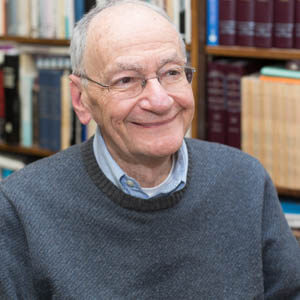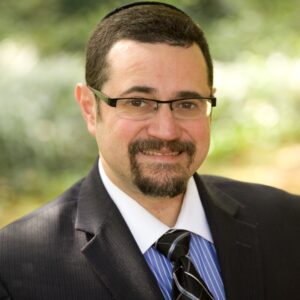Search Results
Back to JTS Torah Online's Main page
An Uneasy Relationship with the God of History
Sep 16, 2000 By Ismar Schorsch | Commentary | Ki Tavo
The Hebrew adjective for being ungrateful is kefui tovah. The idiom stresses the willfulness of the sentiment. The situation calls for an expression of gratitude and we squelch the impulse. The word kefui is related to the word kefiah as in the phrase current in contemporary Israeli politics, kefiah datit – religious coercion, both forms deriving from the root kafah, to suppress. The language makes it clear that saying thanks does not come naturally. We are reluctant to acknowledge a favor that might reveal our need or shortcoming. And so the Torah institutionalizes a thanksgiving ritual, though an unusual one.
Read More
The Commandment to Be an Upstander
Sep 9, 2000 By Ismar Schorsch | Commentary | Ki Tetzei
In July, 1994, I returned to Esslingen, the medieval town not far from Stuttgart, Germany where my mother was born. My grandfather ran a boarding school and enjoyed a regional reputation as an innovative educator. The handsome building which housed it still serves as a school, though no longer Jewish, and bears his name, bestowed by the city fathers a decade earlier in a spirit of contrition. That summer, school and city officials commemorated the 50th anniversary of my grandfather’s death in Theresienstadt, and invited me to speak at the event held on the premises of the school in the room which had once been its synagogue.
Read More
How We Serve God
Aug 26, 2000 By Matthew Berkowitz | Commentary | Re'eh
Demonstrating uncompromising devotion to God is the theme of this week’s parashah, Parashat Re’eh. Such devotion is expressed through belief, but more importantly, through avodah, meaningful service to God. For the biblical Israelite, service to God meant loyalty to God’s commandments and participation in the sacrificial cult. For Deuteronomy, avodah referred specifically to offering sacrifices to God at a central place of worship: “look only to the site that the Lord your God will choose amidst all your tribes as His habitation, to establish His name there. There you are to go, and there you are to bring your burnt offerings and other sacrifices…” (Deuteronomy 12:5-6).
Read More
Technology and Torahs
Aug 19, 2000 By Joshua Heller | Commentary | Eikev
One of the hazards of dealing with technology is its built–in obsolescence. The computer that you bought two years ago is suddently too slow, too short on memory to perform even the simplest task. It is true that the frenetic pace of change in today’s society accentuates the problem, but it is a fact of the natural world that every product of human hands has a limit to its useful lifespan.
Read More
Our Nature Is to Be with God
Aug 9, 2000 By Matthew Berkowitz | Commentary | Va'et-hannan
Parashat Vaet’hanan comes in the aftermath of Tisha B’Av, the fast in which we commemorate the destruction of both the First and Second Temples and other tragedies that have befallen the Jewish people. The theme of our asceticism on this day is not only mourning, but more importantly a spur to teshuvah, repentance. This week’s parashah informs our understanding of calamity and its relation to teshuvah. Moses warns the Israelites, “take care, then, not to forget the covenant that the Lord your God conc
Read More
The Relevance of Tish’ah Be’av
Aug 2, 2000 By Joshua Heller | Commentary | Devarim | Tishah Be'av
Next week, Jews around the world will observe Tisha B’av, mourning the destruction of the First and Second Temples and commemorating many other tragedies of Jewish history. The literary centerpiece of the holiday is the book of Lamentations, Eikha, which mourns the destruction of the First Temple in Jerusalem and the exile of the Jewish people from its land. The book’s refrain is the word “Eikha,” asking the question “How could it be?”–“How could it be that the teeming city lay desolate, that God rejected God’s people?” (Lam 1:1, 2:1, 4:1, 4:2)
Read More
The Treasure of Torah
Jul 30, 2000 By Ismar Schorsch | Commentary | Masei | Mattot
Lists are the most rudimentary type of historical evidence. To us they are lifeless and repetitive, devoid of narrative and significance. Yet, for the historian endowed with imagination, they often become the building blocks for first-rate economic, social or political history. Lack of meaning lies in the eyes of the beholder.
Read More
Between Zealotry and Peace
Jul 22, 2000 By Matthew Berkowitz | Commentary | Pinehas
This week, we read the first of three “haftarot of rebuke” which precede Tisha B’av. Even though this Haftorah is ordinarily associated with Mattot, Mattot is read as the first half of a double–portion this year. We read this haftorah a week “early” to be sure we don’t miss it.
Read More
Listening to Our Enemies
Jul 8, 2000 By Matthew Berkowitz | Commentary | Korah
On Motzei Shabbat, June 24, 2000, the Conservative synagogue of the Ramot neighborhood in Jerusalem, Kehillat Ya’ar Ramot, was set ablaze. According to the New York Times (Monday, June 26, 2000) this hateful act also involved the defacement of the synagogue “with grafitti that labeled it a place unworthy of worship, and said that a yeshiva–trained Jew should not be there.” Numerous eyewitnesses saw “apparently religious men, wearing black velvet skullcaps and white shirts, fleeing as the flames raged.” Prime Minister Ehud Barak rightly called this tragic incident “an awful act that causes every Jew to shudder.” Indeed, the flames which marred this synagogue were ignited by sinat hinam, baseless hatred a painful, incomprehensible hatred all too familiar to the Jewish people.
Read More
A Matter of Perspective
Jul 1, 2000 By Matthew Berkowitz | Commentary | Shelah Lekha
Six years ago, while studying in Israel, a close friend, my father and I decided to make a two day camping trip to Eilat and then to St. Catherine’s Monastery which sits at the foot of what Christian tradition believes to be Mt. Sinai. For me, this was my second pilgrimage to this extraordinary site; my first hike up Jebel Musa (Mt. Sinai) had taken place two years earlier. And so as the experienced one, I planned out the hike such that we would begin hiking from the monastery at about four in the afternoon – enough time to avoid the intense heat of the mid–day sun and to also allow plenty of time for us to reach the summit in time to see the sun set. Along the trek, we were treated to magnificent vistas of desert colors playing off the mountains comprising the Sinai Desert.
Read More
Perception and Practice
Jul 1, 2000 By Matthew Berkowitz | Commentary | Shelah Lekha
Six years ago, while studying in Israel, a close friend, my father and I decided to make a two day camping trip to Eilat and then to St. Catherine’s Monastery which sits at the foot of what Christian tradition believes to be Mt. Sinai. For me, this was my second pilgrimage to this extraordinary site; my first hike up Jebel Musa (Mt. Sinai) had taken place two years earlier.
Read More
“May the Lord Protect and Defend You.”
Jun 17, 2000 By Ismar Schorsch | Commentary | Naso
In older Jewish cemeteries, you will often come upon a tombstone decorated with a pair of hands. They are often juxtaposed near the top, arched in a triangle with fingers noticeably apart. The symbol of hands positioned to administer the priestly blessing designates the grave of a Kohen, a putative descendant of Aaron, the first high priest. As ancient Jewish art often does, the image embodies midrash in visual form. And since the priestly benediction is the centerpiece of this week’s parashah (6:24–26), I wish to reflect on the far–reaching meaning of this midrash.
Read More
Midrash and Monticello
Jun 3, 2000 By Matthew Berkowitz | Commentary | Bemidbar
A few years ago, my wife and I took a trip to Monticello, Jefferson’s estate in Virginia. And while the splendor of the estate is reflected by a magnificently furnished mansion, extensive library, and extraordinary mountain backdrop, I found myself impressed by something far less grand: the vegetable gardens. They were exquisitely arranged. Each vegetable plant, as well as each species, had its place in the garden. Beefsteak tomatoes were planted in a wholly separate row from the plum tomatoes; hybrid peas blossomed in splendid isolation from the green beans; and red cabbage sprouted at a comfortable distance from its green counterpart. Every vegetable had its proper place and marker, such that each could easily be identified.
Read More
Behukkotai’s Challenge to Us
May 27, 2000 By Matthew Berkowitz | Commentary | Behukkotai
Blessing comes to fruition through journey. The journey may be as simple as lighting Shabbat candles or it may be as complicated as leaving the comfort of one’s home to discover new worlds. Either way, that which is familiar is left behind and a new reality challenges one to grow and thus to earn God’s Blessing. Such is the challenge of this week’s parasha.
Read More
The Origins of Sacrifice
May 13, 2000 By Ismar Schorsch | Commentary | Emor
When our three children were still quite young, we did not hesitate to let them masquerade for Halloween and go out to “trick or treat.” For security reasons, we would often go with them. Part of the evening’s fun was handing out the candy at our own door to those who came seeking a treat. The Orthodox day school which our children attended at the time frowned on the practice by insisting that Halloween was once a Christian religious holiday. The sudden display of pedanticism always amused me because what was left of Halloween in our day is utterly bereft of any sacred content. Like Valentine’s Day, it had been completely desacralized, and most American Jews participated in the joy of both days in some fashion. Time had severed the modern secular meaning of each from its medieval religious moorings. The Orthodox assault was not driven by a sudden appreciation for critical scholarship but by an overriding concern for keeping Jews socially apart as much as possible.
Read More
Life’s Triumph Over Death
Apr 8, 2000 By Ismar Schorsch | Commentary | Tazria
Each morning we begin our prayers with a remarkable expression of gratitude.
Read More
Purim Vs. Va-yikra: Order Vs. Chaos
Mar 18, 2000 By Matthew Berkowitz | Commentary | Vayikra | Purim
This week we begin our reading of the book Va-yikra, Leviticus, which details the rites of the sacrificial cult, the dynamics of ritual pollution and purification, and the path toward priestly holiness. As a number of scholars have commented, Leviticus is essentially about order. For bible scholar, Everett Fox, Leviticus describes, “a realm of desired order and perfection, a realm in which wholeness is to reign, in which anomaly and undesired mixture are not permitted, and in which boundaries are zealously guarded” (Fox, The Five Books of Moses, 501). This sense of ordered perfection becomes all the more striking in light of our reading of Megillat Esther next Monday evening. At its core, the Scroll of Esther is about chaos and disorder – a world turned upside down. Which is more authentically Jewish? And how are we to understand the juxtaposition of these world views?
Read More
Lovers of Books
Mar 11, 2000 By Ismar Schorsch | Commentary | Pekudei
In my office hangs a haunting painting (courtesy of the Jewish Museum) by the immigrant artist Moses Soyer. Done in 1934, the painting bears the name “The Lover of Books” and consists of a full length portrait of a smallish, elderly and shabbily dressed man with a large book under his left arm. It could well be a tribute to Soyer’s father who in Russia had been a maskil, a purveyor of Jewish and general culture in Hebrew. The bust on the bookcase in the background suggests a man of broad horizons, though quintessentially Jewish in appearance. The dark shades of the painting and the contrast between the sturdy tome and the fragile figure convey not only a sense of precariousness, but also the power of the book. Love of learning holds the key to the mystery of Jewish survival. What finer emblem could there be to the mission of the Seminary than Soyer’s evocative work!
Read More
A Circle of Obligation
Mar 3, 2000 By Matthew Berkowitz | Commentary | Vayak-hel
In last week’s parasha, Ki Tissa, we heard of the Israelites’ ultimate act of disloyalty – the creation and worship of a Golden Calf. In contrast, this week’s parasha, Va–Yakhel, paints a portrait of absolute devotion. Only three chapters after the Golden Calf episode, the Israelites are now engaged in one of the greatest acts of worship: building a tabernacle which will house the Presence of God. This week’s loyalty stands in stark contrast to last week’s disloyalty. These two episodes, however, not only puzzle the reader with their disparity but serve to shed light on each other.
Read More
Shabbat: A Temple in Time
Feb 26, 2000 By Ismar Schorsch | Commentary | Ki Tissa
If “seeing is believing,” the converse of that adage is surely “out of sight out of mind.” There is something fragile about a faith predicated on sight. Remove its visible attendants and it soon collapses. What did Shakespeare say of another human state? “Love is not love which alters when it alteration finds, or bends with the remover to remove.” Constancy in love or faith soars above the transient.
Read MoreSUBSCRIBE TO TORAH FROM JTS
Our regular commentaries and videos are a great way to stay intellectually and spiritually engaged with Jewish thought and wisdom.




